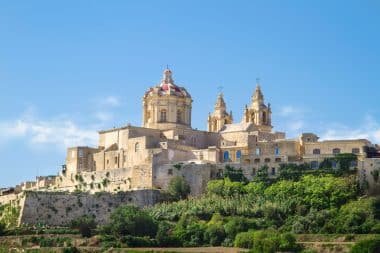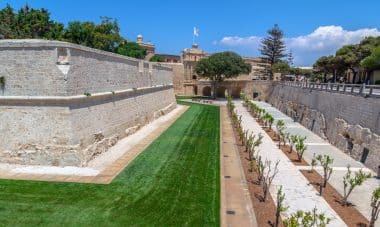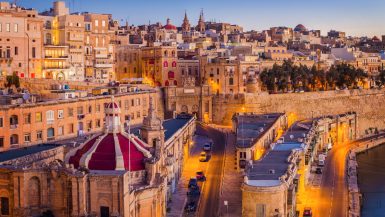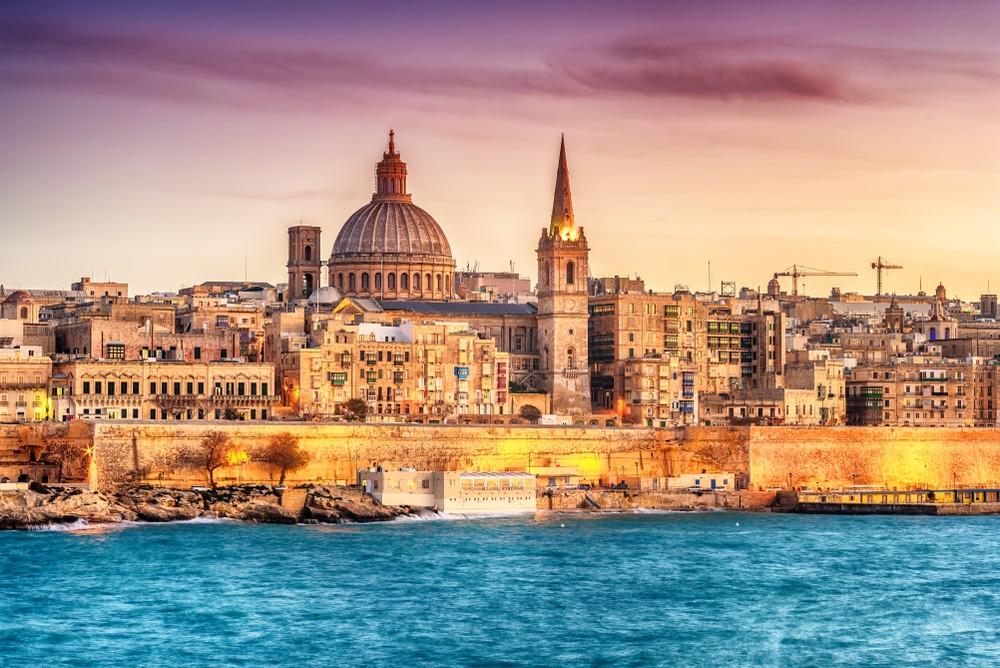Mdina is the old capital of Malta and is located in the center of the island. The place looks back on more than 4,000 years of history and is also called the “City of Silence”. In any case, Mdina is one of the most beautiful walled cities in all of Europe. It is conspicuously enthroned on a 190-metre-high hill above the surrounding countryside. The old town is completely car-free and exudes a unique magic that hardly any visitor can escape.
Brief history of Mdina
Already under the Romans, Mdina experienced its first heyday and was much larger at that time than it is today. Before that, the Phoenicians had already shaped this area. From 870 AD, the Arabs ruled over the city and also gave it its name. However, Mdina received its current strong fortress walls under the rule of the Normans in the 12th century. These strong walls then also prevented the Turks from invading in the 15th century. The former stables of Mdina now form an independent city, namely the neighboring Rabat. While Mdina was the capital of Malta under the Knights of St. John for a short time from 1530, it soon had to give up this role to Birgu and finally to Valletta . Since then, Mdina has experienced a significant decline in population and today has just 400 inhabitants with a declining trend. Neighboring Rabat is much larger. Last but not least, the British stopped by Mdina during their colonial rule.
The most important sights in Mdina
The Main Gate

As a rule, you enter Mdina through the large baroque city gate. It is the prelude to an atmospheric tour through the narrow streets of the old town. It was built in 1724 by order of Grand Master Manoel de Vilhena. After passing the Main Gate, the first thing you come across is the Torre dello Standardo. This is part of the massive city fortifications and was used by the Knights of St. John for communication with other cities in Malta .
The heart of Mdina – the cathedral
St. Paul’s Cathedral is the unmissable focal point of the old town of Mdina. Like so many other churches in Malta, it is built of white limestone and has two twin towers. Kept simple on the outside, the richly decorated interior of the cathedral is all the more impressive. You can see artistic baroque decorations, several tombs, beautiful frescoes and the dome enthroned above everything. Right next to the cathedral, the adjoining cathedral museum is also worth a visit.
The Palaces of Mdina

Mdina’s old town is characterized by several magnificent palaces. The Palazzo Falson from the 13th century and the Palazzo Vilhena on St. Publius Square are particularly impressive. The latter palace was built in the 17th century and now houses the exhibitions of the Natural History Museum. Underground stretches a branching labyrinth of corridors and chambers, the so-called Mdina Dungeons.
The fortress walls of Mdina
The mighty fortress walls surround the old town of Mdina almost squarely. Today, the walls can be visited and guarantee unique views of the narrow streets of the village and the varied surrounding area. The city wall has both medieval and baroque elements. However, an earthquake at the end of the 17th century destroyed parts of the defiant fortress walls. The alternation of light and shadow creates unforgettable plays of colour here as well as in the narrow streets of the old town.
A beautiful view can be enjoyed not least from the Pjazza Tas-Sur. It is lined with pretty town houses.
Food & Drink in Mdina
The cozy alleys of Mdina invite you to try some of the local food and drinks. Fresh fish and the fish soup Aljotta with garlic, rice and tomatoes are just as much a part of it as the Maltese vegetable stew or the rabbit stew “Stuffat Tal-Fenek”. This is also served fried. The optionally sweet or savoury pastizzi, a greasy puff pastry, should also be tried. “Qassatat” is the name of another popular snack with pea or ricotta filling. Inspired by Italy, fresh pasta is of course also served, but the Arabic influences have also left their mark on Maltese cuisine. The best way to go with it is the tart-sweet lemonade Kinnie, the national drink of Malta, or a cool Cisk lager. For example, Café Fontanella with its beautiful view is recommended for a bite to eat.
Travel time and climate for Mdina
Summers in Malta are usually warm, humid and dry. In winter, on the other hand, it can also be windy and cool. In July it is warmest with just under 30°C. Rain usually only occurs between September and March. June and July are completely free of precipitation. Spring and autumn are considered the best time to travel, but even in summer, after an extended day of swimming, it is worth taking a detour to the “City of Silence”, when most day visitors have already left Mdina. Especially in the evening it exudes a fantastic atmosphere.



